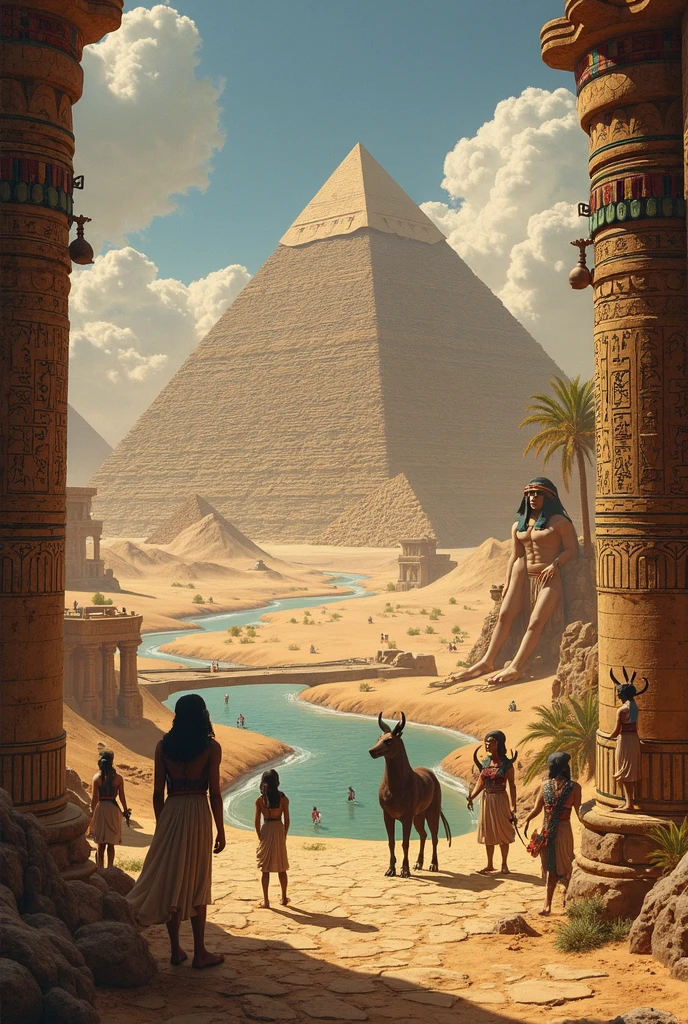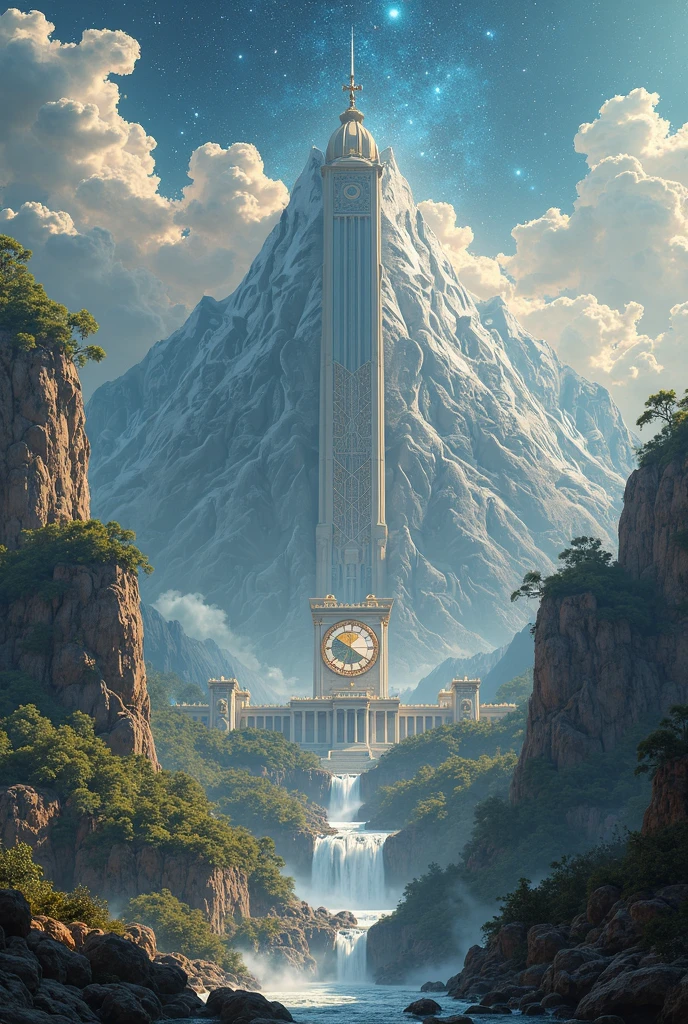Nahuatl Mythology: The Legacy of Quetzalcoatl and the Ancient Gods
The rich tapestry of Nahuatl mythology is deeply intertwined with the history and culture of Mesoamerica. Among its most revered deities is Quetzalcoatl, the Feathered Serpent, a symbol of wisdom, creation, and renewal. This article explores the myths, legends, and cultural significance of Quetzalcoatl, as well as his connections to the Toltecs and the legendary city of Teotihuacan.
Who Was Quetzalcoatl?
Quetzalcoatl, whose name means “Feathered Serpent” in Nahuatl, was one of the most important gods in Mesoamerican mythology. He was associated with:
- Wind and air
- Wisdom and knowledge
- Creation and fertility
- The morning star (Venus)
Often depicted as a serpent covered in vibrant quetzal feathers, Quetzalcoatl was both a creator and a cultural hero who brought civilization to humanity.
The Role of Quetzalcoatl in Nahuatl Mythology
In Nahuatl mythology, Quetzalcoatl played a central role in the creation of the world. According to legend, he descended into the underworld to retrieve the bones of previous generations, mixing them with his own blood to create a new race of humans. This act symbolized rebirth and the cyclical nature of life.
Quetzalcoatl and the Toltecs
The Toltecs, a powerful civilization that flourished between the 10th and 12th centuries, revered Quetzalcoatl as a divine ruler. The legendary priest-king Ce Acatl Topiltzin Quetzalcoatl was said to embody the god’s virtues, promoting peace, art, and learning. His reign was later disrupted by dark forces, leading to his exile—a myth that some scholars link to historical conflicts.
Teotihuacan: The City of Gods
The ancient city of Teotihuacan, located near modern-day Mexico City, was a spiritual epicenter where Quetzalcoatl was widely worshipped. The Temple of the Feathered Serpent stands as a testament to his importance, adorned with intricate carvings of the deity.
| Key Structures in Teotihuacan | Significance |
|---|---|
| Temple of the Feathered Serpent | Dedicated to Quetzalcoatl, featuring serpent heads and intricate reliefs |
| Pyramid of the Sun | One of the largest pyramids in Mesoamerica, aligned with celestial events |
| Pyramid of the Moon | Associated with feminine deities and rituals |
The Symbolism of the Feathered Serpent
The Feathered Serpent was more than just a deity—it was a powerful symbol representing the union of earth (serpent) and sky (quetzal bird). This duality reflected balance, a core concept in Nahuatl mythology.
Quetzalcoatl’s Wisdom and Teachings
Quetzalcoatl was also known as a bringer of wisdom. He was credited with introducing:
- Agriculture, particularly maize cultivation
- Calendar systems and astronomy
- Writing and artistic traditions
His teachings influenced later civilizations, including the Aztecs, who adopted and adapted his myths.
Quetzalcoatl in Aztec Mythology
When the Aztecs rose to power, they incorporated Quetzalcoatl into their pantheon, blending his legends with their own. They believed he would one day return, an expectation that played a role during the Spanish conquest when some mistook Hernán Cortés for the returning god.
Legends of Quetzalcoatl’s Return
Several myths describe Quetzalcoatl’s departure and prophesied return:
- After being tricked by the god Tezcatlipoca, Quetzalcoatl left in shame, vowing to return.
- His promised return was tied to cycles of time, reinforcing Mesoamerican beliefs in cosmic renewal.
- The Aztec emperor Moctezuma II initially hesitated to confront Cortés, fearing he might be Quetzalcoatl.
Modern Interpretations of Quetzalcoatl
Today, Quetzalcoatl remains a powerful symbol in Mexican culture and beyond. His image appears in art, literature, and even contemporary spiritual movements. Scholars continue to study his myths to understand the worldview of ancient Mesoamericans.
For further reading on Nahuatl mythology, check out these resources: Mexicolore’s Guide to Quetzalcoatl, Britannica’s Quetzalcoatl Entry, and Ancient History Encyclopedia on Teotihuacan.
Explore more fascinating articles on mythology and history on our website, and don’t forget to follow us on facebook.com/zatiandrops for daily updates!
The Cosmic Battles of Quetzalcoatl and Tezcatlipoca
One of the most dramatic narratives in Nahuatl mythology involves the eternal struggle between Quetzalcoatl and his rival, Tezcatlipoca, the god of night, sorcery, and destiny. Their conflicts shaped the cosmos, leading to the destruction and rebirth of multiple worlds, known as the Five Suns.
The Five Suns and Their Destruction
According to Nahuatl cosmology, the universe cycled through five eras, each destroyed by cataclysms:
| Era (Sun) | Ruling Deity | Destruction |
|---|---|---|
| First Sun (Nahui Ocelotl) | Tezcatlipoca | Devoured by jaguars |
| Second Sun (Nahui Ehécatl) | Quetzalcoatl | Destroyed by hurricanes |
| Third Sun (Nahui Quiahuitl) | Tlaloc | Consumed by fire rain |
| Fourth Sun (Nahui Atl) | Chalchiuhtlicue | Flooded by water |
| Fifth Sun (Nahui Ollin) | Tonatiuh | Ongoing, prophesied to end in earthquakes |
Quetzalcoatl and Tezcatlipoca alternated as creators and destroyers, reflecting the duality of order and chaos in Nahuatl thought.
Quetzalcoatl’s Cultural Gifts to Humanity
Beyond agriculture and astronomy, Quetzalcoatl was credited with introducing foundational aspects of Mesoamerican civilization:
- The Sacred Calendar (Tonalpohualli): A 260-day ritual calendar used for divination and ceremonies.
- Metallurgy: Legends claim he taught the art of working gold and precious stones.
- Medicine: He revealed healing herbs and rituals, linking him to the god Xipe Totec.
The Art of the Toltec Goldsmiths
The Toltecs were renowned for their craftsmanship, particularly in gold and turquoise mosaics. Under Quetzalcoatl’s influence, their workshops produced:
- Ritual masks depicting gods
- Ceremonial breastplates adorned with serpents
- Jewelry symbolizing celestial bodies
Quetzalcoatl’s Connection to Other Deities
The Feathered Serpent was often syncretized with gods from neighboring cultures, demonstrating his pan-Mesoamerican influence:
- Kukulkán: The Yucatec Maya version of Quetzalcoatl, worshipped at Chichén Itzá.
- Gucumatz: The K’iche’ Maya deity associated with creation myths in the Popol Vuh.
- Ehécatl: The wind aspect of Quetzalcoatl, depicted with a beak-like mask.
The Wind God Ehécatl
As Ehécatl, Quetzalcoatl was revered as a life-giving force. Temples dedicated to him were built with circular bases to minimize wind resistance, and priests wore conch-shell pectorals to invoke his breath.
Rituals and Offerings to Quetzalcoatl
Worship of the Feathered Serpent involved elaborate ceremonies, often tied to agricultural cycles. Key rituals included:
- Spring Equinox: At Chichén Itzá, the shadow of Kukulkán descends the pyramid’s steps, symbolizing his descent to the underworld.
- Bloodletting: Nobles performed auto-sacrifice using stingray spines, offering blood to sustain the gods.
- New Fire Ceremony: Held every 52 years to prevent the end of the world.
The Sacred Ballgame
The Mesoamerican ballgame (tlachtli) was deeply tied to Quetzalcoatl’s myths. Some versions describe it as a reenactment of the battle between Quetzalcoatl and Tezcatlipoca, where the ball symbolized the sun’s movement.
Quetzalcoatl in Colonial and Modern Times
After the Spanish conquest, Quetzalcoatl’s legacy persisted in surprising ways:
- Christian Syncretism: Missionaries likened him to Saint Thomas or even Christ, blending indigenous and Catholic beliefs.
- National Symbol: Modern Mexico celebrates him as an emblem of cultural resilience, appearing on coins and murals.
- Neo-Aztec Movements: Contemporary spiritual groups revive his teachings as part of indigenous revitalization efforts.
Quetzalcoatl in Popular Culture
The Feathered Serpent inspires modern media, including:
- Literature: Appears in novels like The Plumed Serpent by D.H. Lawrence.
- Video Games: Featured in franchises like Age of Empires II and Smite.
- Music: Referenced in songs by Mexican rock bands like Caifanes.
Archaeological Discoveries and Ongoing Research
Recent excavations continue to reveal Quetzalcoatl’s influence across Mesoamerica:
- Templo Mayor: Aztec offerings depicting Quetzalcoatl-Ehécatl were found in Mexico City.
- Xochicalco: A pyramid with Feathered Serpent reliefs suggests his worship spread beyond Teotihuacan.
- La Venta: Olmec artifacts hint at early serpent deity cults that may have influenced Nahuatl myths.
For deeper insights, explore these resources: The Met’s Feathered Serpent Exhibit, World History on Quetzalcoatl, and Archaeology Magazine on Teotihuacan.
Explore more fascinating articles on mythology and history on our website, and don’t forget to follow us on facebook.com/zatiandrops for daily updates!
The Sacred Animals of Quetzalcoatl
In Nahuatl mythology, Quetzalcoatl was intimately connected with several sacred animals that symbolized his divine attributes:
- The Quetzal Bird: Represented the celestial realm with its iridescent green feathers, which were more valuable than gold.
- The Rattlesnake: Embodied earthly wisdom and the cyclical nature of life through its shedding skin.
- The Butterfly: Symbolized transformation and rebirth, often depicted in codices alongside the Feathered Serpent.
The Quetzal’s Sacred Significance
The resplendent quetzal, native to Central America, was considered so sacred that:
- Its feathers were reserved exclusively for royalty and high priests
- Killing a quetzal was punishable by death in some Mesoamerican cultures
- Its iridescent green tail feathers symbolized the growth of plants and the rainy season
The Astronomical Connections of Quetzalcoatl
Quetzalcoatl’s celestial associations went beyond Venus as the Morning Star. Mesoamerican astronomers carefully tracked his movements through:
| Celestial Body | Mythological Connection | Calendar Significance |
|---|---|---|
| Venus (Morning Star) | Quetzalcoatl as light-bringer | Marked the beginning of the sacred 260-day calendar |
| Venus (Evening Star) | Quetzalcoatl’s journey to the underworld | Associated with warfare and sacrifice |
| The Milky Way | Seen as the Feathered Serpent’s celestial path | Guided agricultural cycles |
The Venus Cycle in Mesoamerican Rituals
The complete 584-day Venus cycle was meticulously recorded and celebrated through:
- Special ceremonies at El Tajín’s Pyramid of the Niches
- The construction of observatories like the Caracol at Chichén Itzá
- Bloodletting rituals timed with Venus’ appearances
Quetzalcoatl’s Influence on Mesoamerican Architecture
The worship of Quetzalcoatl inspired distinctive architectural features across ancient cities:
- Serpent Balustrades: Stone railings depicting undulating feathered serpents, as seen at Teotihuacan
- Twin-Pyramid Complexes: Representing the celestial and terrestrial realms connected by Quetzalcoatl
- Circular Wind Temples: Dedicated to Ehécatl-Quetzalcoatl with unique acoustics for wind ceremonies
The Symbolism of the Feathered Serpent Pyramid
The Temple of Quetzalcoatl at Teotihuacan contains layers of symbolic meaning:
- Each of the 365 feathered serpent heads represents a day in the solar year
- The alternating Tlaloc masks signify the balance between earth and sky
- The pyramid’s alignment marks the spring equinox sunrise
The Psychological Interpretation of Quetzalcoatl
Modern scholars have analyzed Quetzalcoatl through psychological frameworks:
- Jungian Archetype: Represents the wise old man and the self-realization process
- Shamanic Journey: His underworld descent mirrors the shaman’s spiritual transformation
- Cultural Hero: Embodies the civilizing force that brings order from chaos
The Duality of Quetzalcoatl’s Nature
The complex dual aspects of the Feathered Serpent include:
| Positive Aspects | Challenging Aspects |
|---|---|
| Creator of humanity | Destroyer of worlds |
| Bringer of civilization | Exiled ruler |
| Morning Star (light) | Evening Star (war) |
Explore more fascinating articles on mythology and history on our website, and don’t forget to follow us on facebook.com/zatiandrops for daily updates!
The Sacred Texts and Codices of Quetzalcoatl
Our understanding of Quetzalcoatl comes largely from surviving Mesoamerican codices, pictorial manuscripts that recorded Nahuatl mythology:
- Codex Borgia: Contains the most complete visual narrative of Quetzalcoatl’s adventures
- Florentine Codex: Compiled by Bernardino de Sahagún, preserving Aztec accounts of the Feathered Serpent
- Codex Chimalpopoca: Includes the Legend of the Five Suns and Quetzalcoatl’s role in creation
Deciphering the Symbolic Language
The codices use complex symbolism to represent Quetzalcoatl:
- The wind jewel (epcololli) signifies his identity as Ehecatl
- Red and black colors represent wisdom and the underworld
- The conch shell symbolizes both wind and fertility
Quetzalcoatl’s Influence on Mesoamerican Trade
The worship of Quetzalcoatl facilitated extensive trade networks across Mesoamerica:
| Traded Item | Spiritual Significance | Trade Routes |
|---|---|---|
| Quetzal feathers | Direct connection to the deity | From Guatemala to Central Mexico |
| Obsidian | Used in sacrificial knives for rituals | Pachuca to Teotihuacan |
| Cacao | Sacred food of the gods | From Maya lowlands to Aztec empire |
The Merchant God Aspect
In some traditions, Quetzalcoatl was associated with the Pochteca, the elite merchant class who:
- Served as spies and diplomats
- Maintained temples dedicated to Quetzalcoatl
- Transported sacred objects between city-states
The Musical Legacy of Quetzalcoatl
Music played a vital role in the worship of Quetzalcoatl, with specific instruments connected to his cult:
- Teponaztli: A horizontal drum often carved with serpent imagery
- Conch Trumpets: Representing Ehecatl-Quetzalcoatl’s breath
- Ayacachtli: Rattles made from gourds, used in wind ceremonies
The Lost Songs of Quetzalcoatl
Colonial documents reference sacred hymns dedicated to the Feathered Serpent:
- “In Chicomexochitl” – The Seven Flowers song of creation
- “Ipan in Cuicatl” – The song of his descent to Mictlan
- “Xochipitzahuatl” – The flower purification chant
Quetzalcoatl’s Botanical Associations
Several sacred plants were intimately connected with Quetzalcoatl in Nahuatl tradition:
| Plant | Ritual Use | Mythological Connection |
|---|---|---|
| Maize | Central to creation myths | Quetzalcoatl brought maize from the Mountain of Sustenance |
| Morning Glory | Used in divination rituals | Symbolized the morning star aspect |
| Copal Resin | Sacrificial incense | Represented the “precious blood” of the gods |
The Sacred Mushroom Connection
Some scholars suggest that Quetzalcoatl’s visionary experiences may relate to:
- Teonanácatl (psilocybin mushrooms) used in rituals
- The “flying” metaphor common in mushroom iconography
- Colonial accounts of “divine intoxication” ceremonies
The Warrior Aspect of Quetzalcoatl
While often portrayed as peaceful, Quetzalcoatl had significant martial associations:
- As Venus the Evening Star, he guided warriors in battle
- The Xiuhcoatl (turquoise serpent) was his weapon of destruction
- Aztec emperors claimed descent from Quetzalcoatl to legitimize conquests
The Tlahuizcalpantecuhtli Complex
In his warrior manifestation as “Lord of the Dawn,” Quetzalcoatl was:
- Associated with elite military orders
- Depicted with darts and spear-throwers
- Invoked before major campaigns
Explore more fascinating articles on mythology and history on our website, and don’t forget to follow us on facebook.com/zatiandrops for daily updates!


